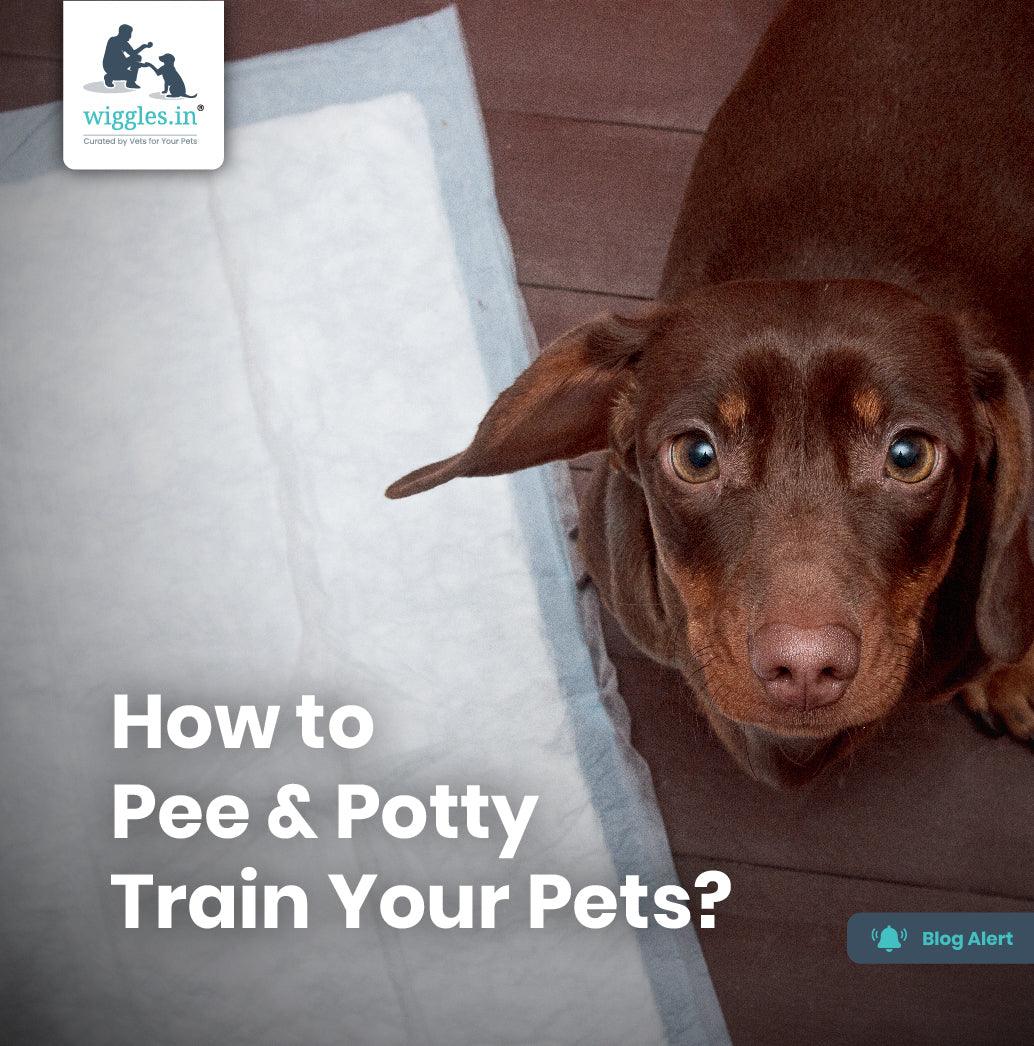Do you remember the moment when you first saw your puppy or kitten? Those innocent eyes & little paws. They made their way straight into our hearts! We all remember that moment because that’s when we truly fell in love with something so small yet so precious!
But, but, but. They bamboozled us within a few days. Amidst the happiness & snuggles, we forget that they had to pee & poop. And since we didn’t know how to manage it, they ended up marking their territories on our bed sheets & mattress. And at that moment, we ask ourselves, is it really important to pee & potty train our pets?
The answer is YES!
Why is pee & potty training important?
Just like our babies, our pets have no control over when & where to pee or poop. This often results in a lack of control. Our pets end up peeing or pooping all across the house which leads to additional tasks of cleaning for the pet parent. This can be especially embarrassing if you have guests over or you are visiting someone. It is always better to let your pet know when & where to relieve themselves.
It seems like a daunting task but it can be developed into a habit with consistent practice, praise & a lot of patience!
What do you need?
Before you start with the training, there are a few things you need to equip yourself with.
- Crate (for dogs) - Crate training is an essential step towards potty training. The crate’s size will depend upon your puppy’s size & breed. Remember, a crate is not to punish a puppy but rather to teach them that “this is your space and you cannot relieve yourself here.”
- Leash (for dogs) - Training also involves taking your puppy outside for his nature’s call. A leash will keep them under your supervision & it will be easier for you to train them.
- Treats - Tasty treats will be their reward for doing the right thing i.e. peeing & pooping right.
- Gates/Hurdles - If you have a big space, then these gates will ensure that your pet doesn’t sneak out of their designated space.
- Stain & Odour remover - If your pet has already peed or pooped at some spot, make sure you clean it well. Use a pet-friendly stain & odor remover so that your pet isn’t able to sniff their misdeeds. The reason behind a thorough cleaning is that once they get a sniff, they are bound to pee or poop at the same place again.
- Bunch of old newspapers - If you are training your pet to pee & poop inside the house, you can either use an astroturf or a bunch of newspapers too. Place them in a corner where you want your pets to pee or poop.
- Cat litter sandbox - Unlike dogs, cats use a cat litter sandbox to pee & poop. Make sure you get one before you start training.
- Management - Now that you know the signs your puppy needs to be taken out, it is imperative to manage the situation. In order to successfully train your puppy, you need to keep an eye on him as much as possible. The more you supervise, the more success you’ll have. This means that until he’s completely trained, your puppy will always need to be in one of the following scenarios:
- a) In a room with you while you actively watch his every movement.
- b) Attached to you with an umbilical cord (a leash attached to your puppy’s collar with the end of the leash around your waist or snapped to your belt) as you run errands and do chores around the home.
- c) Outside with you going potty.
But of course, your puppy cannot be supervised 100% of the time. When you can’t be with him, your puppy should be either left in a crate or in a small puppy-safe area. Crate training is based on the principle that puppies do not like to soil in an area where they sleep. It is fundamental, therefore, to invest in a crate of the right size — snug enough so the pusxp is not comfortable soiling in a corner, but large enough to allow him to comfortably stretch, stand up, and turn around.
Only use a crate with puppies who have obtained better bladder and sphincter control (which happens at around 12 weeks of age), otherwise use a small puppy-safe area. The small area should be easy to clean up (an area of the kitchen closed off with a baby-gate works fine).
- Poop bag - Last but not least, if you are taking your puppy outside for their nature’s call, make sure you carry a poop bag. Some residential areas & parks may not allow you to leave their business behind. Carry one while training your pets too.
Steps & Methods
Before you start training your pet, one needs to understand that our pets don’t understand what’s being expected from them. They only understand that if they pee & poop outside, they are rewarded for it.
- Positive reinforcement
Reward your pet whenever they get it right. They need to associate their acts with a reward. And this reward is them getting treats!
- Set up a routine
Believe it or not, our pets are way more punctual than us. But for that to happen, you need to set up a routine. Young puppies & kittens tend to pee more. Make sure you take them out every 2 to 3 hours. Follow this routine and adjust as they grow up.
- Be consistent
From food to taking toilet breaks, be consistent. If you feed them at 10 am in the morning, you will have to take them out for a walk within 2 hours or so. If you skip or delay, they may end up doing their business inside.
While you can teach your pets, it is always helpful that you seek assistance from a professional trainer. If you are looking for one then we are right here! Call us at +91 8431620000 & we will be happy to help!
If you wish to be a part of an ever-growing pet parent community, then join Wiggles Tribe on Facebook today and get all your queries answered by our in-house vets!



















